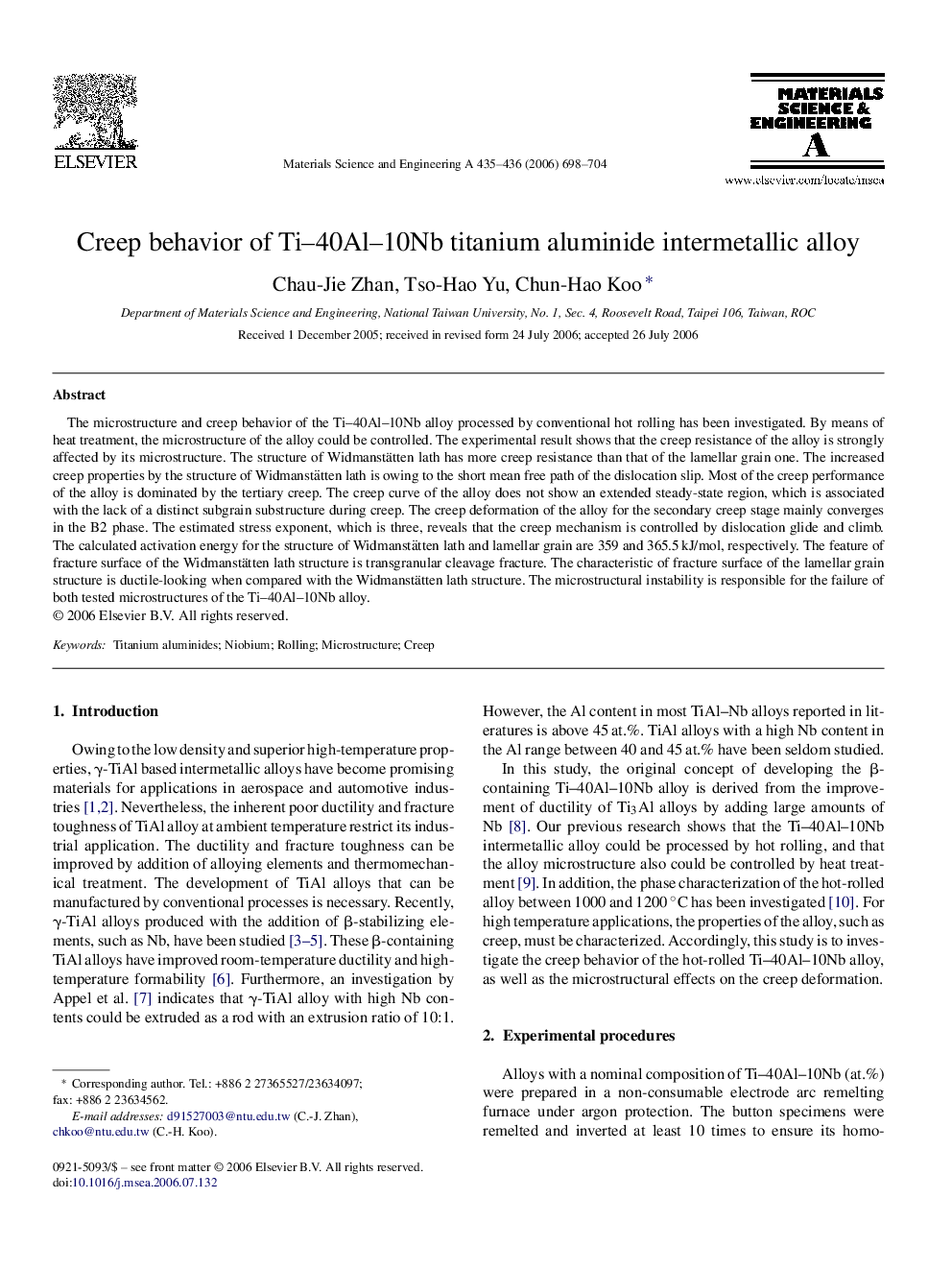| Article ID | Journal | Published Year | Pages | File Type |
|---|---|---|---|---|
| 1585190 | Materials Science and Engineering: A | 2006 | 7 Pages |
The microstructure and creep behavior of the Ti–40Al–10Nb alloy processed by conventional hot rolling has been investigated. By means of heat treatment, the microstructure of the alloy could be controlled. The experimental result shows that the creep resistance of the alloy is strongly affected by its microstructure. The structure of Widmanstätten lath has more creep resistance than that of the lamellar grain one. The increased creep properties by the structure of Widmanstätten lath is owing to the short mean free path of the dislocation slip. Most of the creep performance of the alloy is dominated by the tertiary creep. The creep curve of the alloy does not show an extended steady-state region, which is associated with the lack of a distinct subgrain substructure during creep. The creep deformation of the alloy for the secondary creep stage mainly converges in the B2 phase. The estimated stress exponent, which is three, reveals that the creep mechanism is controlled by dislocation glide and climb. The calculated activation energy for the structure of Widmanstätten lath and lamellar grain are 359 and 365.5 kJ/mol, respectively. The feature of fracture surface of the Widmanstätten lath structure is transgranular cleavage fracture. The characteristic of fracture surface of the lamellar grain structure is ductile-looking when compared with the Widmanstätten lath structure. The microstructural instability is responsible for the failure of both tested microstructures of the Ti–40Al–10Nb alloy.
